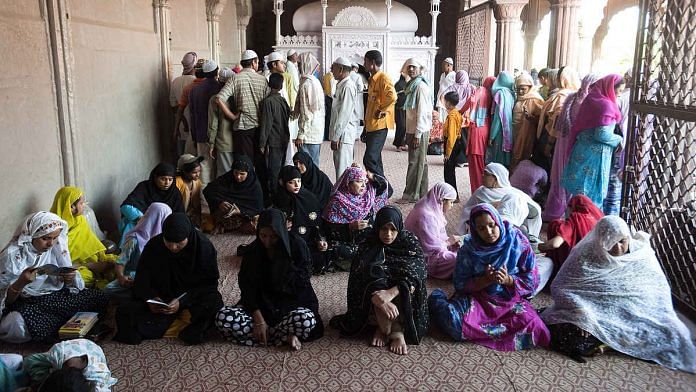The coronavirus pandemic struck India at a moment when the country was more polarised than it has been in decades. Particularly since 2019, when Prime Minister Narendra Modi won a landslide reelection victory, he and his government have exacerbated the country’s polarisation by advancing a majoritarian, Hindu nationalist agenda. On the surface, the coronavirus has put political animosities on hold, as Modi has toned down his populist and confrontational rhetoric. Yet at the same time, fears surrounding the pandemic have rapidly amplified societal polarisation and intolerance, in particular against India’s Muslims.
Although Modi has long loomed as a polarising figure in Indian politics, during the pandemic he has championed national unity and won broad national support. The prime minister’s signature policy initiative has been a nationwide lockdown—the world’s largest—which began on 25 March and has been extended until at least 17 May. Even though the lockdown was announced with just hours’ notice and caused a mass migration of more than 600,000 people walking on foot to reach their villages, a majority of Indians have embraced the prime minister’s policy enthusiastically. Furthermore, Modi has sought to cultivate a feeling of “collective resolve and solidarity” throughout the lockdown, for instance by asking all Indians to clap together in support of essential workers or to light candles at a designated time. Likely as a result of the crisis and his skillful public outreach, Modi’s net approval rating soared to 68 percent in mid-April, up from 62 percent in mid-March. By this token, polarisation has at least somewhat receded.
At the broader societal level, however, the pandemic has fueled intolerance and even violence in some instances against the country’s Muslim minority. The catalyst for rapidly growing anti-Muslim sentiment was a single event in mid-March organized by a Muslim missionary movement called Tablighi Jamaat. The group’s event center, or Markaz, rapidly emerged as a major hot spot in India’s coronavirus outbreak. Hundreds of followers, including many foreign nationals, attended the Markaz event, and by mid-April, after weeks of testing and contact tracing, the Indian government had identified more than 4,000 coronavirus cases related to the event, representing almost 30 percent of India’s total confirmed infections.
Also read: Indian media is waging a holy war against Muslims. It acts like hyenas
The Markaz incident fanned the flames of societal polarisation in a country where violence against Muslims has erupted as recently as February 2020. The event became a 24/7 subject of conversation on social media and television stations, while bigots exploited the outbreak to paint the entire Muslim community as a vector of disease. “CoronaJihad” became the top trending hashtag on Twitter for days; between March 28 and April 3, the incendiary hashtag appeared 300,000 times and was viewed by possibly 300 million people on Twitter. Meanwhile, prominent television channels openly spouted anti-Muslim conspiracy theories, and even many respected print outlets fell into the trap of playing to Islamophobia. The relentless media attention to the event found its way into the health ministry’s daily press briefing, in which the spokesperson regularly cited the number of coronavirus cases linked to the Markaz incident.
This outpouring of hateful rhetoric has translated into an increase in anti-Muslim discrimination and violence across India. Painted as “corona villains” or virus spreaders, Muslims have been beaten and attacked by vigilante groups. After many days of silence, Modi appealed for unity, emphasizing that the virus “doesn’t see religion, language, or borders.” Yet his words have proven largely unable to stem growing intercommunal discord, and in this context, Muslim communities’ deep distrust of the Hindu nationalist government—evident in a series of violent attacks on frontline health workers—has emerged as a potential barrier to providing them with healthcare and containing the spread of the virus to others.
Thus, the pandemic has aggravated the religious polarisation that has been intensifying since Modi took office in 2014. Just months before this crisis, in December 2019, Modi’s government passed the discriminatory Citizenship Amendment Act that established religion as a basis for granting citizenship and proposed a National Register of Citizens, fueling fears among many Indian Muslims that their legal citizenship was in jeopardy. Now, at a time when the minority community already was under attack, it must confront a new wave of hatred and stigma.
Niranjan Sahoo, PhD, is a senior fellow with the Governance and Politics Initiative at the Observer Research Foundation. Views are personal.
This article, part of the series ‘Polarization and the Pandemic’, was first published by the Carnegie Endowment For International Peace.




Anyone questioning Tablighi Jamaat role in spreading corona, is called Islamophobic. Why.
Nowadays highlighting the truth is ‘Anti nationalism ‘ !
Amazing. Muslims attacking health workers is not their fault either
Always the victim, it’s never their fault.
The title is very anti Indian. Very deceiving. This will be picked up by foreign media to harm Hindus living overseas. Is this freedom of speech granted in constitution for ? Or is this an abuse of freedom of speech and media.